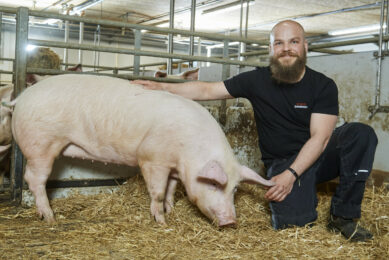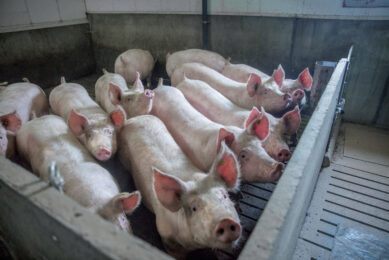Mycotoxins: straw contributes to pig health
Mycotoxins in straw could pose a particular threat to the health of pig herds this year, according to James Hall of pig-breeding company ACMC.
“This season has been a truly awful one for straw. Because of the late, wet harvest, it’s been both in short supply and of poor quality. While many producers are aware of mycotoxins in cereals, the danger from mouldy straw can be easily overlooked,” he warns.
©
Alarm signals
The first alarm signals could be an increase in the number of returns to service, extended weaning-to-service intervals and late-to-mid-term abortions. Hall advises any producers seeing such symptoms to seek advice from their vets and nutritionists without delay.
The first alarm signals could be an increase in the number of returns to service, extended weaning-to-service intervals and late-to-mid-term abortions. Hall advises any producers seeing such symptoms to seek advice from their vets and nutritionists without delay.
©
The effects upon the breeding herd are likely to be the most serious and the disruption caused to breeding routines can be costly, he points out.
©
Hopefully, those who have had to buy in straw will have obtained the best quality that’s available, since it’s always false economy to buy a poor sample. Barley straw generally has been of better quality as the later wheats tended to catch the worst of the weather.©Barley straw is more expensive, but lasts twice as long.
©
With the late season, many arable farmers chopped their straw directly behind the combine, to avoid holding up their autumn cultivations, so there was often not a lot of choice, he concedes.
©
“On some farms I’ve seen wheat straw that’s so grey it looks like oilseed rape straw,” says Hall. “Obviously the aim is for a nice golden colour, so if the straw looks to be poor quality, don’t use it for the breeding herd, particularly if it is showing signs of mould!”
©
Practical steps
But there are practical steps that can be taken on the farm. The sensible approach, he says, is to use the best straw for the breeding herd and young pigs.©It’s not so critical with finishing pigs which have a short life anyway.
©
Producers who mill and mix their own feed would be well advised to use a mycotoxin binding agent, if they are not already doing so, he suggests. Several products are available and, at £5 to £10 per tonne, are a relatively inexpensive form of insurance.
©
Those who buy in compounds should check with their feed supplier if such additives are available. Compound feed does not necessarily contain these products.©But it is important to note that feed additive binders won’t protect against mycotoxins which are later ingested when pigs eat infected straw.











